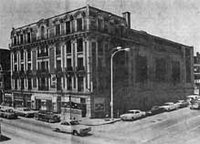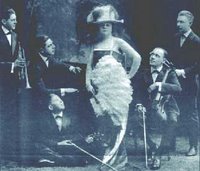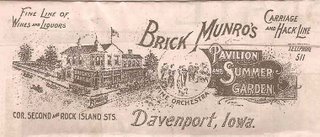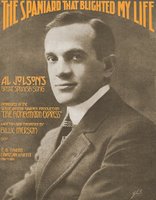Heir to the King
John Willard
Quad-City TimesPublication
March 28, 2006
Page: B1
James A. "Brick" Munro was an entertainment king-pin whose son never lacked cash to pursue his own fun.
The fatherly side of the "King of Bucktown" is revealed by his grandson, Richard Munro, of Seal Rock, Ore.
Richard provides more information about his colorful grandfather, the subject of our Jan. 24 column. It includes a tape recording of an interview in which Richard's father, the late James Munro, talks about the family's legacy in Bucktown, the notorious entertainment district that flourished on the east side of downtown Davenport in the early 20th century.
Here Brick Munro's Pavilion and Summer Garden thrived at the southwest corner of 2nd and Rock Island Street (Pershing Avenue), now the site of Bucktown Center for the Arts.
In the taped interview, James Munro said, thanks to his father, he always had "a pocket full of money" so that he and his friends could play punch board games. He speaks of his father's enterprises that included seven theaters, a livery stable, pool hall and the city's first motorized taxi service.
He also mentions that a young singing bartender named Al Jolson entertained at Brick's Pavilion before achieving fame as one of the biggest musical stars of the 20th century.
Despite its location in a bawdy Bucktown, with its gambling dens and brothels, Brick Munro did not tolerate prostitutes in his saloon and dance hall, his son said in the interview.
Brick Munro died in poverty at age 78 in 1940. Newspaper obituaries noted that he rarely turned down anyone who asked for money.
His son became an overhead crane operator and a labor union activist. His work with the United Auto Workers prompted the taped interview. Born in 1905, he died in 1982.
Richard Munro, 68, son of James Munroe and grandson of Brick Munro, graduated from Davenport (Central) High School in 1956 and from St. Ambrose College (University) in 1961. He retired in 1997 as a vice president with Nationwide Insurance.
He said his father and grandfather shared similar traits in that both never knew the value of a dollar and would help strangers.
"I am proud of the contributions my grandfather and father made to the Davenport community," he writes.
John Willard can be contacted at (563) 383-2314 or jwillard@qctimes.com.





